Tillandsia Mystic Circle
Click thumbnails for full size, scaled to a new window.
Tillandsia Mystic Circle
cv. of meridionalis x albertiana. Dimmitt.M., Butcher.D.
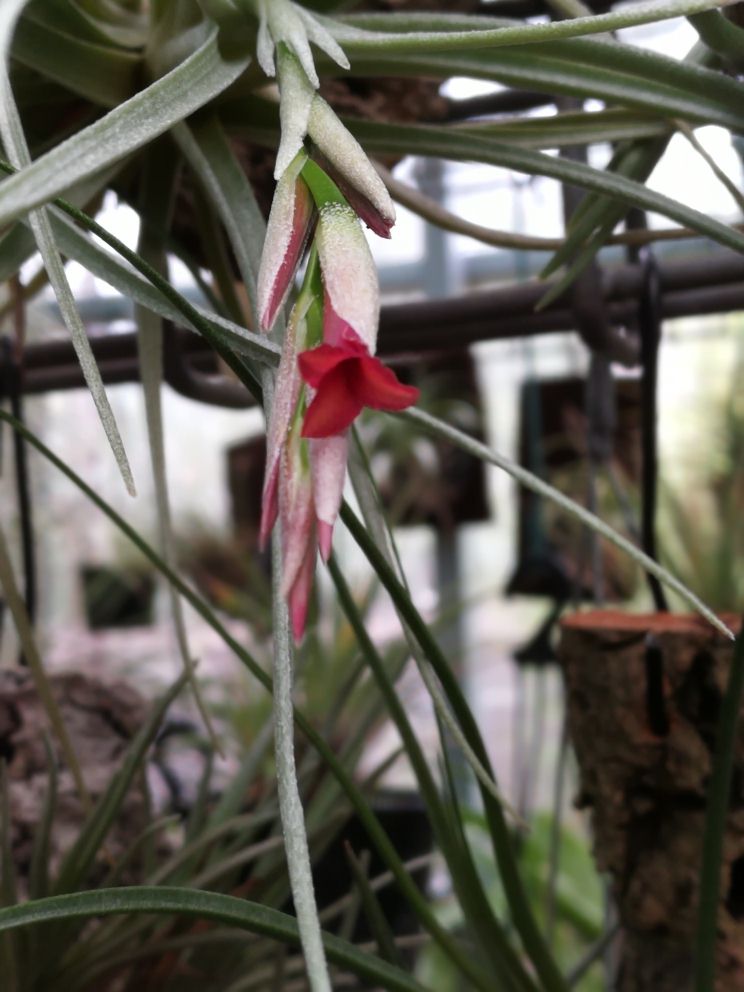
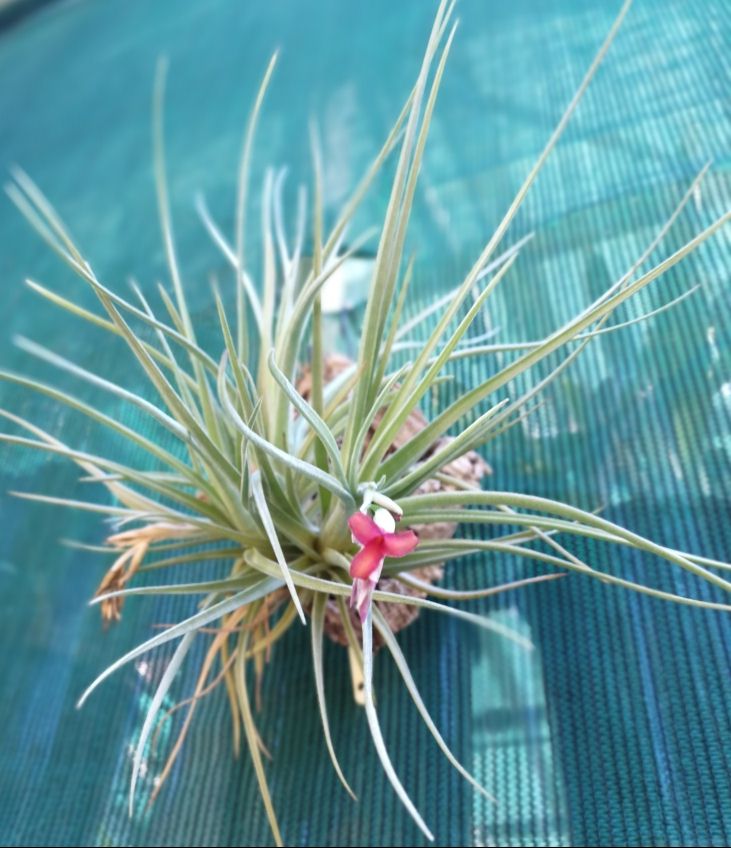
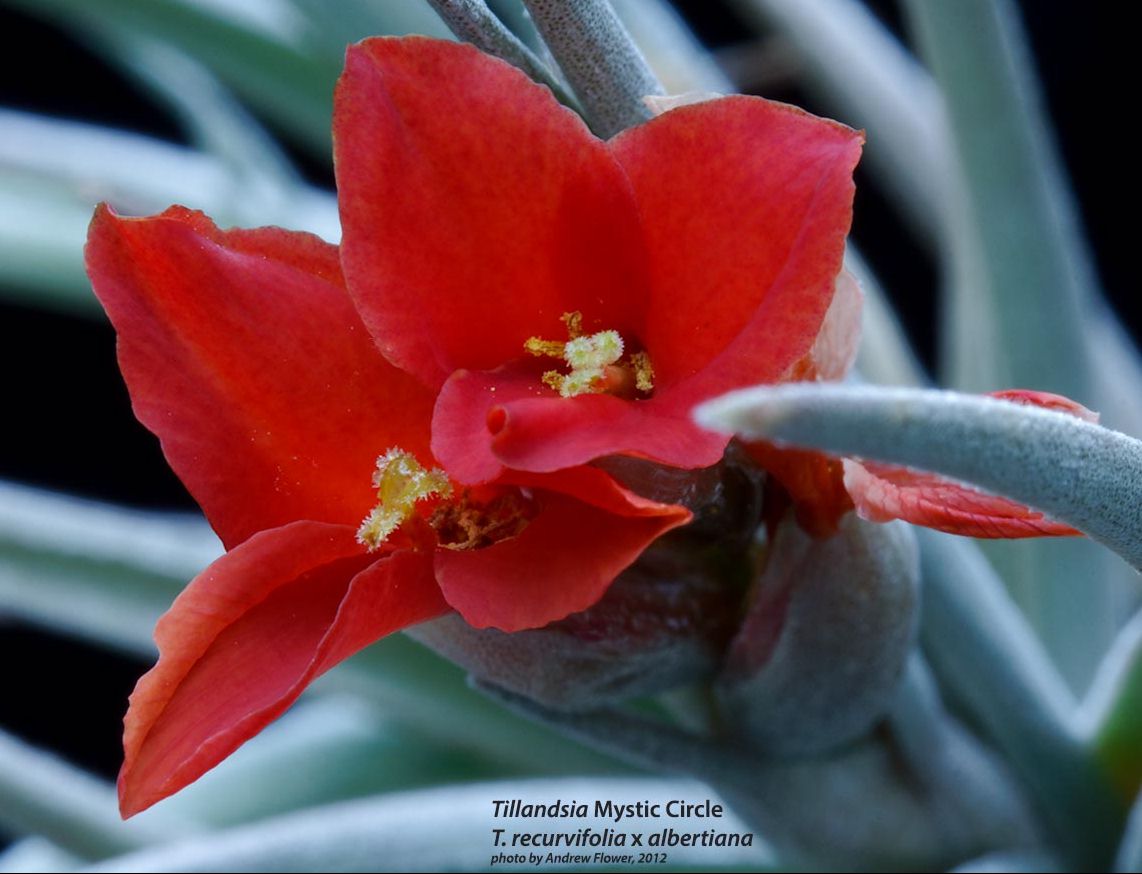
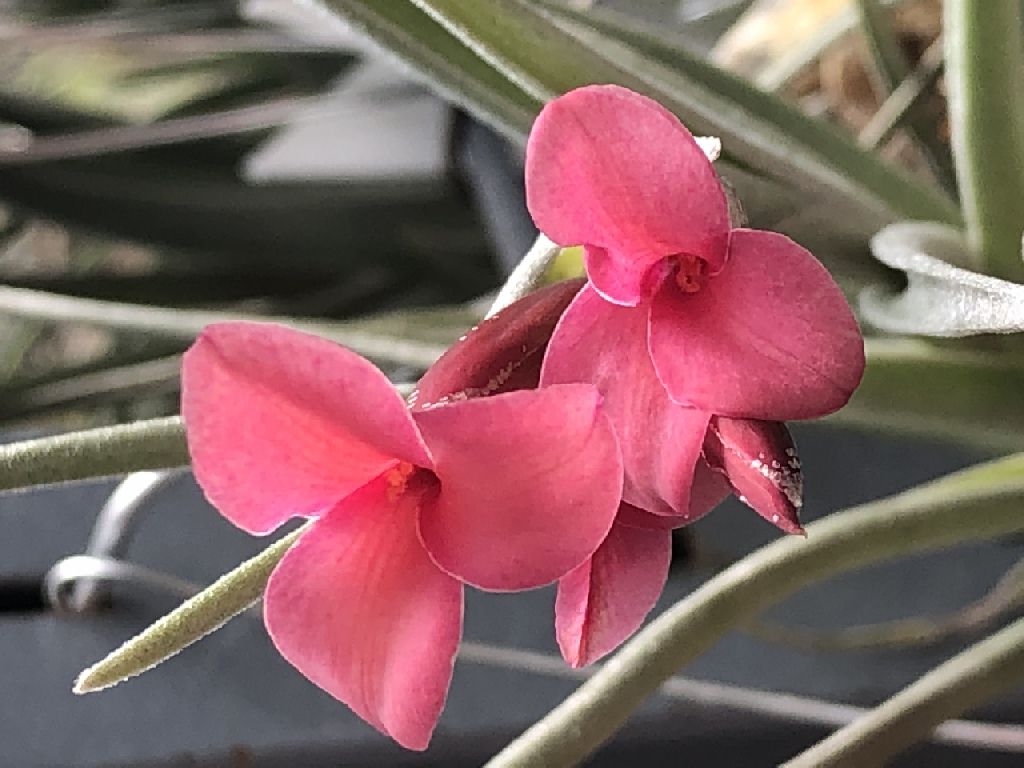
| Justin Lee 03/18. Mystic Circle ?? |
Andrew Flower 03/18 (remake) |
Dale Dixon 10/19 as reverse parentage |
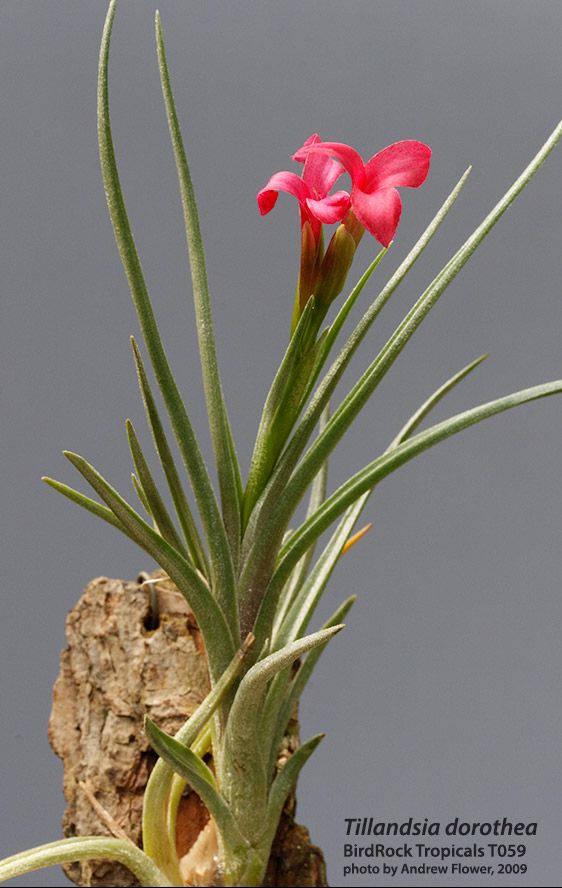
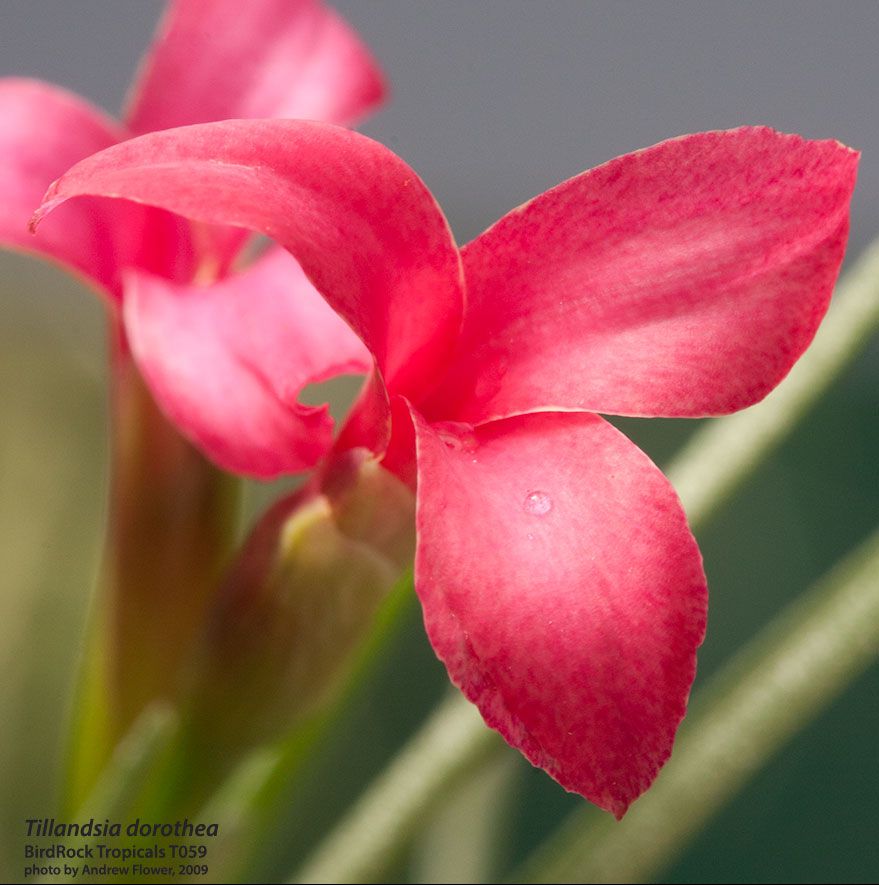
| T. dorotheae Andrew Flower /09 |
Justin Lee ... "Is anybody able to tell me which Mystic hybrid this one is? The petals have a dark purple edge with an orange-ish (?) centre."
Derek Butcher ... "I can't get past Mystic Abert. To think that this all started some 36 years ago with Mark Dimmitt and it was not until 2003 that I got into earnest discussions with Mark. Even then there were nuances of colour just to confuse me. They were mainly distributed by either BirdRock or Rainforest. So how your plant got into this country could have a bearing as to what clone it was!"
Chris Larson ... "It doesnt have the stricta influence in the foliage that Mystic Albert has IMHO. Look at Mystic Circle."
Andrew Flower ... "I agree with Chris - at first I had thought about my T. Mystic Circle then chickened out, mainly because of the exserted stigmas on mine and I though the petal shape was not quite right. I'm not very good at identifying tillandsias by looking at them whole, I'm afraid. And the camera angle can make a big difference.
My Mystic Circle certainly has T. recurvifolia dominant in the foliage. And I'm pretty sure it would have come from Pam originally."
Justin Lee ... "I have attached a better picture now that the flower has opened up a bit more."
Andrew Flower ... "The second picture now looks like Tillandsia dorotheae ! I think I will retire gracefully now. Perhaps we could call it T. Mystic Carma Chamelion?"
Derek Butcher ... "Yes, murky Mystic waters. See the document (under dorotheae - this website) especially the end bit"
Andrew Flower ... "For reference, here are a couple of pics of Tillandsia dorothea bought from Pam in the early 1990's - her number T059. Flowering in 2009, it was 13cm high all-up."
Chris Larson ... "I have had some of these hybrids from Isley for many years. Many sit just inside the definitions, and Collectors Corner & I have named them after seeing close associations with pics on the BCR. We have also sold them as “T. albertiana Hybrid Dimmitt” & “T. albertiana hybrid ex-Isley”.
Re-Justin’s photo – CC are selling this plant under the name T. Mystic Circle – I can’t get closer to anything else by comparing the plant with photos on the BCR.
However this plant was bought as T. dorotheae from Isley. But, there were several other forms of what I think are different Mystic cv’s in amongst the same T. dorotheae batch. There were no plants in this batch that I thought were like the other forms of dorotheae (THAT I HAVE SEEN). These same group of plants were available on Pauls table at the WBC in Cairns, 2008 as dorotheae. Other collectors bought Paul’s dorotheae at the WBC and many raised queries me when they flowered – all agreed that they did not appear to be dortheae."
Dale Dixon 10/19 ... "Is anyone else growing this hybrid of Dimmitt’s? Tillandsia albertiana x recurvifolia (meridionalis). The reverse cross on the BCR is T. ‘Mystic Circle’. I got my plant from Margaret Patterson. I think it’s worthy of a name if it hasn’t been already?"
Derek Butcher 10/19 ... "Dale: the best of luck. In the 1990's I had problems hence the name 'Mystic'. Plants came to Aussie from Hyatt and Isley. I enclose a list of what happened with Pam but alas nothing from Paul. Remakes could have been made more recently by others including Holm."
Chris Larson 10/19 ... "and Pam said in this group recently that some of her tags at one stage, many years ago, had the names reversed. So is it worth differentiating on this basis?"
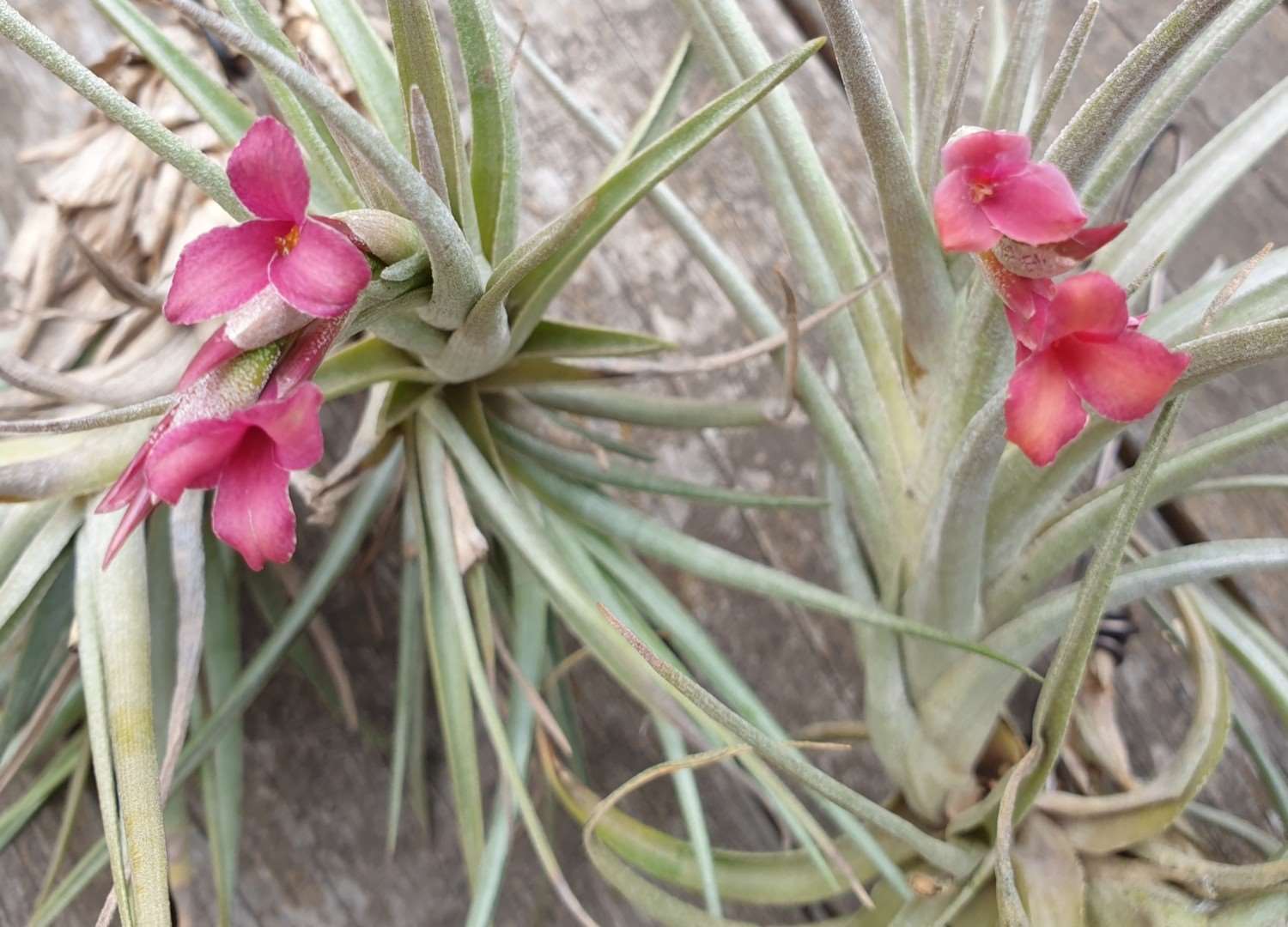
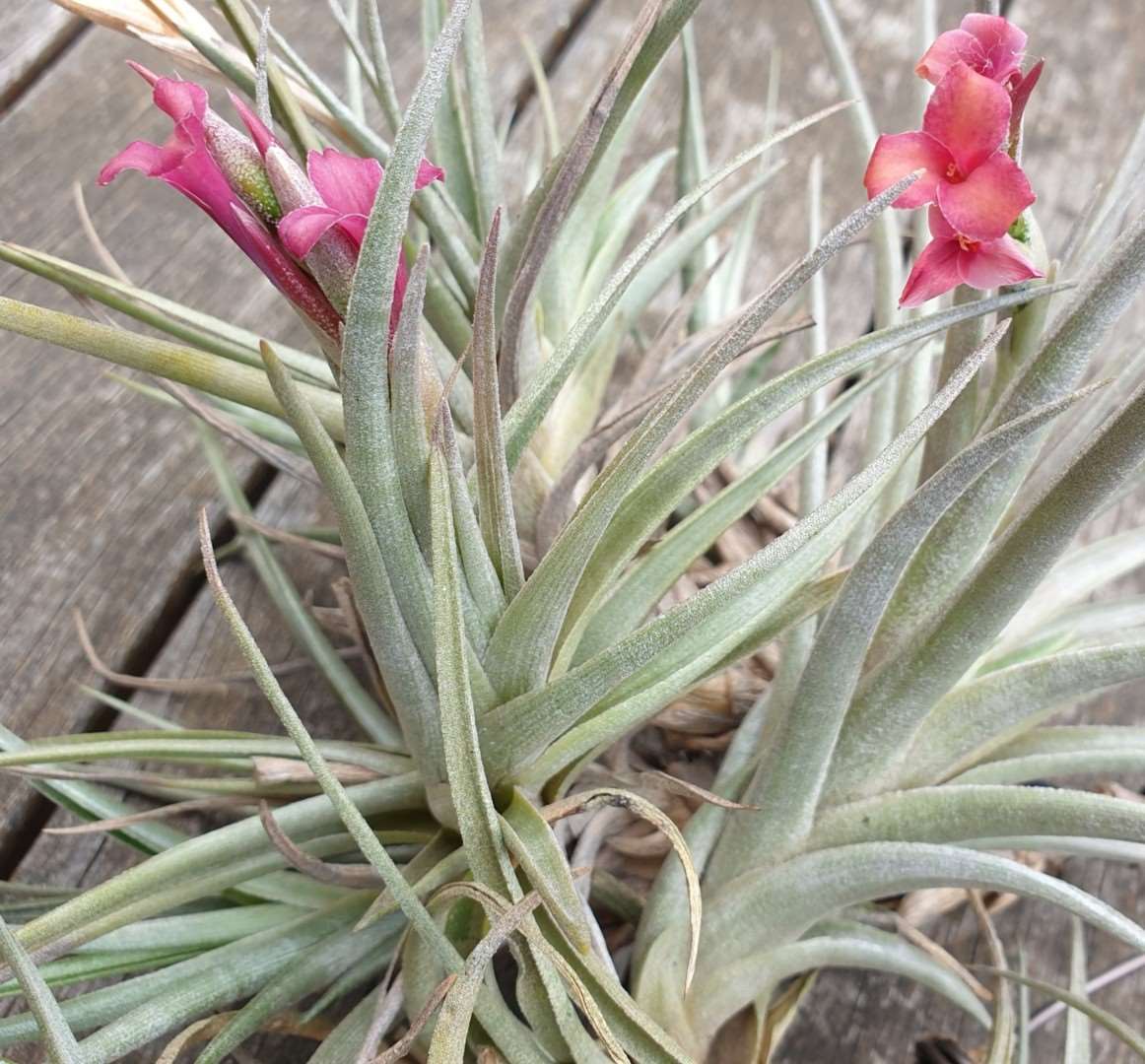
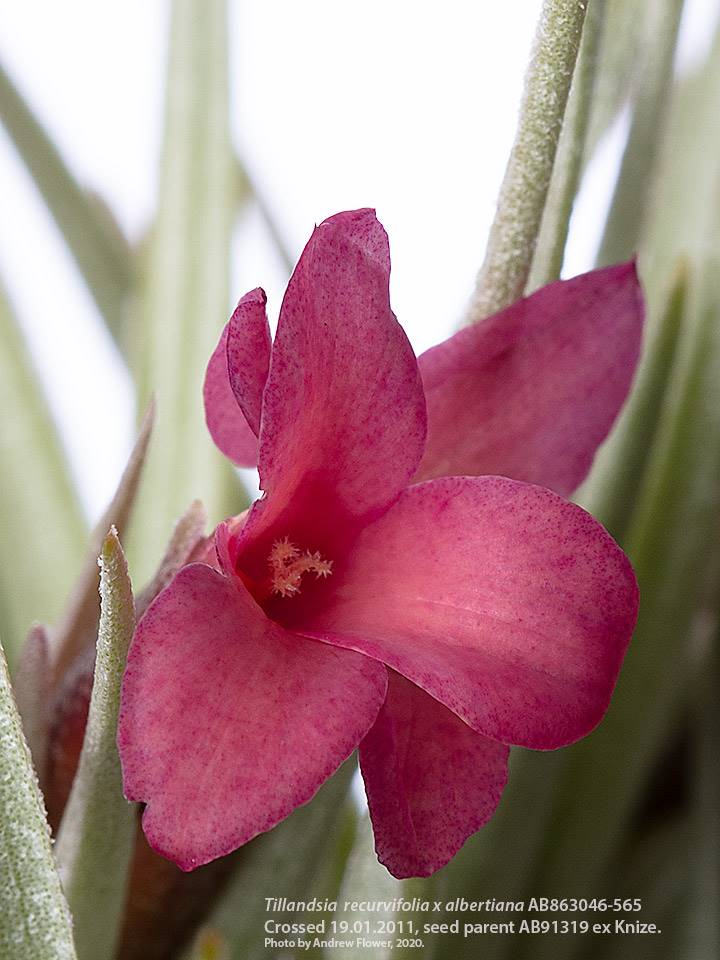
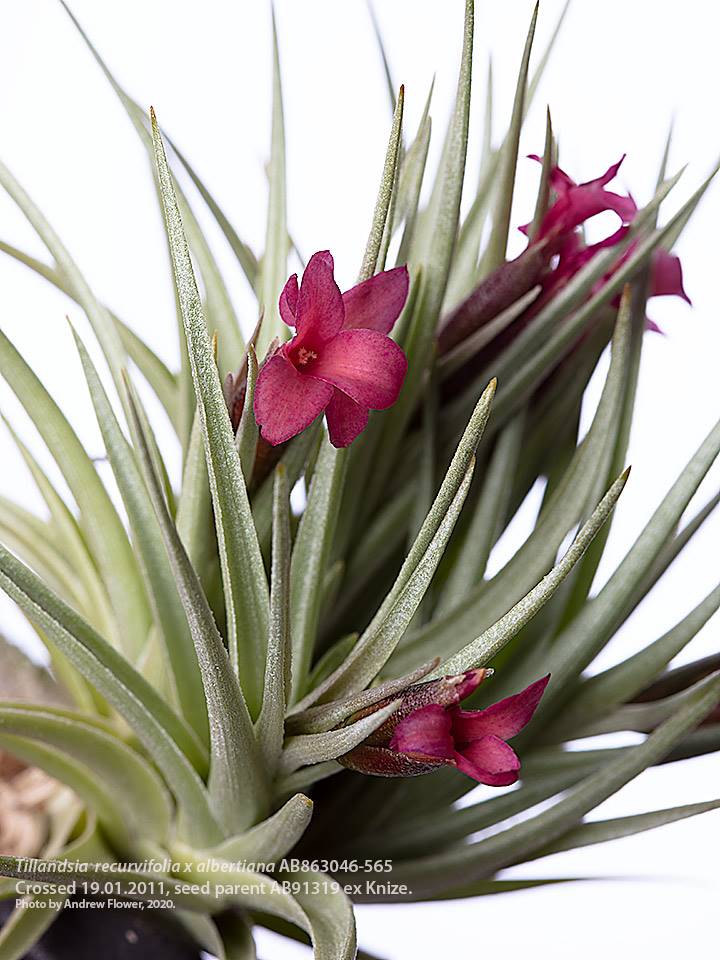
| Chris Larson 01/21 Mystic Circle(purple) on left? |
Andrew Flower 01/21 Mystic Circle (remake, note stigma) |
Chris Larson 01/21 ... "A couple of the plants I received from Isley some 15 years ago as T. dorotheae .... again. The one on the right is the one I believe Dale Dixon registered as T. Mystic Trumpet Enigma.
But what is the one on the left?"
Dale Dixon ... "Chris: Agree with you. The one on right is Mystic Trumpet Enigma.
I have one of the RFI ‘dorotheae’ that has reddidh bracts and purple flowers. Narelle Nichols flowered a similar one recently. It’s on Tillandsia Addicts if you want to look at it.
We need to discuss what we are going to do with these. Should they get names?"
Bob Hudson ... "Lynn and I brought Tillandsias in for Peter Isley for the conference, had them Quarantined and then looked after them for him."
Chris Larson ... "Grant Paterson also got a load of them, Isleys leftovers, after the close of the World Brom Conf in Cairns is 2008. I bought 1 from Isley there & it was the albertiana X ixioides - whatever that is called now.
They probably do need registering. They are all likely Dimmitt seedlings that he supplied to various nurseries in the states in the 1980s. So many would be the same as the already registered plants."
Dale Dixon ... "Oh. I have one with albertiana x xiphioides from Margaret Paterson. Would it have come from the conference as well? I wondered why it wasn’t registered."
Chris Larson ... "I am going to call this one T. Mystic Circe (purple). It is pretty close from Dereks photo on the BCR. https://registry.bsi.org/?genus=TILLANDSIA&id=8188#8188
Anyone growing T. Mystic Circle that thinks it different?"
Andrew Flower ... "Just as a matter of interest, I happen to have made a hybrid with the same species as registered for T. Mystic Circle - using a T. recurvifolia (syn. T. meridionalis) as seed parent that was grown from seed ex Knize in 1991 (Ed. see recurvifolia page) and a pretty standard T. albertiana as pollinator.
Photos of a seedling attached. You may like to compare them to images of Mystic Circle on the BCR page."
Eric Gouda ... "Interesting stigma Andrew!"
Tillandsia hybrids with T. albertiana as one of the parents.
by Butcher in J. Brom. Soc. 53(1) 25-6. 2003
In the period of 1982 to 1985 Mark Dimmitt of Tucson, Arizona saw the potential that T. albertiana had and wondered how its brilliant coloured flower could be combined with other species. He tried hybridising with 7 other species and the long wait started. Flowering started in the early1990’s and each crossing seemed to have its own character. A few plants were donated to local plant Societies but most have been distributed by Rainforest Flora and Bird Rock Tropical in California under their grex parentage. So, many of you may well be the owner of one of these man-made hybrids.
Natural hybrids – that is not made directly from Man’s influences but possibly indirectly because of Man’s influence on the environment - tend to be forgotten by the specialist botanist. It is for this reason that there is a list of these under Cultivar Corner on the Website http://BSI.org . There is also a link to a Natural hybrid data base maintained by fcbs.org. You will notice that many of these are tillandsias. Some have been formally described with herbarium specimens and some not described but recorded by formula which is perfectly legal under the ICBN rules. The seed parent is not known for obvious reasons and the ones reported to me are shown in alphabetical order. Because of the evolution of natural hybrids very rarely would they be of an F1 generation. If these hybrids are found in different locations they could well have backcrossed to either parent showing a range of plants between either parent. From a Registrars perspective I am not enamoured with the idea of these being given a cultivar name because as we know a cultivar name should only follow the clone (offset). However, the right to name because of its uniqueness is with the applicant and all I can do is advise! A check should be made in the Natural hybrid list to see what problems have to be faced. An example of what can happen is (ionantha x schiedeana) which has been named under ICBN rules as xrectifolia and under ICNCP rules as ‘Jack Staub’. It is your decision as to which of the three names you call your plant!
Man-made hybrids are not recognised under the ICNCP rules unless they have a Cultivar name and a photograph instead of the herbarium specimen. Here, you should know both parents and the role they play.
Many are F1 generation meaning their progeny should look similar and can share the same cultivar name. BUT NOT ALWAYS so you need to be vigilant. As you are aware, ever since becoming Registrar and having the luxury of an easily accessible Data base, I have been promoting the legitimization of man-made hybrids known only by their formula.
Because we now have photographs, some of Mark Dimmitt’s hybrids have been named and information is as follows. Note that seed parent is named first and its name is that used at the time of pollination.
‘Mystic Albert’ = stricta x albertiana, named by D Butcher
‘Mystic Burgundy’ = muhriae x albertiana, named by B Timm
‘Mystic Circle’ = meridionalis x albertiana, named by D Butcher
‘Mystic Flame’ = albertiana x ixioides (and reverse), named by M Dimmitt
‘Mystic Flame Orange’ = albertiana x ixioides (and reverse), named by M Dimmitt
‘Mystic Rainbow’ = albertiana x arequitae, named by D Butcher
‘Mystic Rainbow Peach’ = albertiana x arequitae, named by D Butcher
‘Mystic Rainbow Pink’ = albertiana x arequitae, named by D Butcher
‘Mystic Trumpet’ = albertiana x xiphioides, named by M Dimmitt
‘Mystic Trumpet Peach’ = albertiana x xiphioides, named by M Dimmitt
‘Mystic Trumpet Pink’ = albertiana x xiphioides, named by M Dimmitt
‘Mystic Twins = albertiana x geminiflora, named by D Butcher
I hope this is just the start of us separating natural hybrids from man-made ones.
Updated 09/02/21









